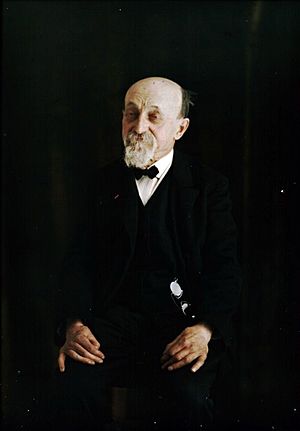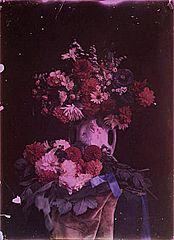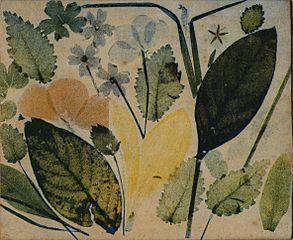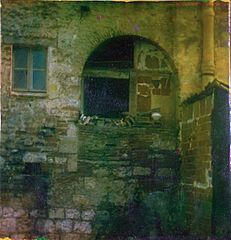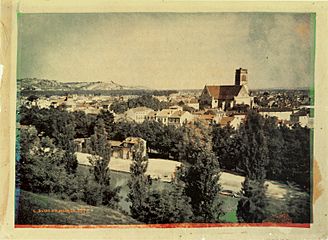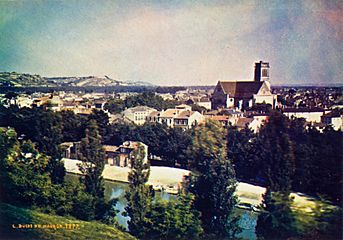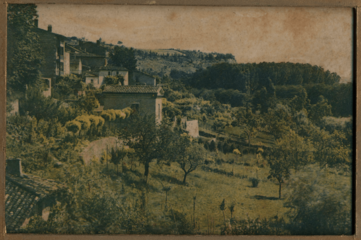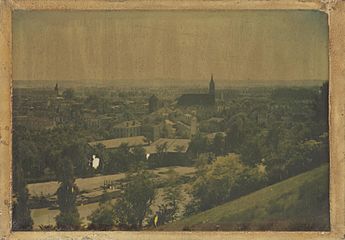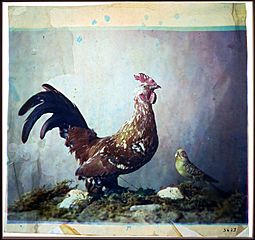Louis Arthur Ducos du Hauron facts for kids
Louis Arthur Ducos du Hauron (born December 8, 1837 – died August 31, 1920) was a French inventor. He was a very important person in the early days of color photography.
Contents
About Louis Ducos du Hauron
Louis Ducos du Hauron was born in Langon, a town in Gironde, France. He later passed away in Agen.
Pioneering Color Photography
Louis Ducos du Hauron was one of the first people to figure out how to take photos in color. In 1862, he wrote down his first ideas about this. He then worked hard to create real ways to make color pictures.
He used two main ideas for color photography:
- Additive color: This method mixes different colors of light (like red, green, and blue) to create all other colors.
- Subtractive color: This method uses dyes or pigments that remove certain colors of light. This is how color printing works today.
In 1868, he received a patent for his ideas. A patent is like a special permission that protects an invention. The next year, in 1869, he wrote a book about his discoveries. It was called Les couleurs en photographie, solution du problème (Colors in Photography, Solution to the Problem).
A big step forward happened in 1873. A scientist named Hermann Wilhelm Vogel discovered something called dye sensitization. This made it much easier to separate colors when taking a picture. This discovery helped all of Ducos du Hauron's methods work even better.
Famous Color Photos
One of his most famous color photographs is the View of Agen. He took this picture in 1877. It shows a landscape in southern France. He made this photo using his subtractive method. This was a new way to print color pictures.
Many other photos he took still exist today. These include views from his attic window, some from 1874. He also took pictures in Algeria, photos of still life objects, and copies of paintings.
Creating 3-D Pictures
In 1891, Louis Ducos du Hauron also invented something cool called the anaglyph. You might know these as the "red and blue glasses" type of 3-D pictures.
Other people had used this idea for drawings before. They also used it to show images on a screen. But Ducos du Hauron was the first to make 3-D photographs that you could hold. These were printed on paper and were very easy to use.
Gallery
-
Color print made from three direct photograms, 1869 or 1870
-
View of Agen, 1875.
-
"A hovel in our neighbourhood", Agen, dated 14 March 1877.
-
View of Agen, France, showing the St. Caprais cathedral, 1877. Heliochrome (multilayer dichromated pigmented gelatin process). George Eastman House
-
A later 20th century print of the Agen photograph made from the original 1877 negatives. George Eastman House
See also
 In Spanish: Louis Ducos du Hauron para niños
In Spanish: Louis Ducos du Hauron para niños


